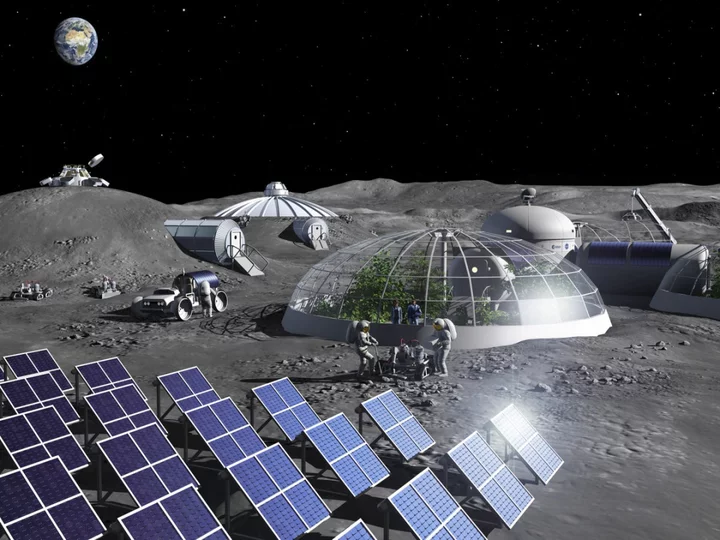Future space missions could use all-female crews because they are more ‘efficient’
Future space missions might use all-female crews because they are more “efficient”, a new study has suggested. Many space agencies around the world are already preparing for the first human trips to Mars and perhaps other planets. But those trips will be incredibly resource-intensive, with the food and other material required to support a crew over years being an important consideration. One way to minimise that demand on resources would be to send all-female crews, a new study conducted by the European Space Agency suggests. It found that female astronauts would be likely to need less water to stay hydrated, expend less energy, need less oxygen and carbon dioxide and produce less heat than their male counterparts. That in turn would require less space to store the equipment needed to allow those astronauts to live, and therefore make the journey theoretically easier for engineers. The exact difference between a male and female crew would depend on the stature and other details of the astronauts that were chosen. But in all situations, the all-female crew were found to use less energy. That was because they are lighter than their male counterparts, and tend to use less oxygen when they are exercising. The difference remained true even when the astronauts were modelled as if they were engaging in the kind of exercise that astronauts have done on the International Space Station, which is required to ensure they stay fit and healthy without the usual gravity on Earth. The fact that women also tend to be smaller would be another advantage the scientists note, since it would mean that engineers would be able to build them smaller space habitat modules. “There may be a number of operational advantages to all-female crews during future human space exploration missions,” the team conclude in a new paper. The work was theoretical and used already published data on female astronauts and physiological research. The research is published in a new paper, ‘Effects of body size and countermeasure exercise on estimates of life support resources during all-female crewed exploration missions’, in Scientific Reports. Read More Why is Elon Musk purging Twitter accounts? Apple finally launches two professional apps on the iPad AI robots figure out how to play football in shambolic footage
Future space missions might use all-female crews because they are more “efficient”, a new study has suggested.
Many space agencies around the world are already preparing for the first human trips to Mars and perhaps other planets. But those trips will be incredibly resource-intensive, with the food and other material required to support a crew over years being an important consideration.
One way to minimise that demand on resources would be to send all-female crews, a new study conducted by the European Space Agency suggests.
It found that female astronauts would be likely to need less water to stay hydrated, expend less energy, need less oxygen and carbon dioxide and produce less heat than their male counterparts.
That in turn would require less space to store the equipment needed to allow those astronauts to live, and therefore make the journey theoretically easier for engineers.
The exact difference between a male and female crew would depend on the stature and other details of the astronauts that were chosen. But in all situations, the all-female crew were found to use less energy.
That was because they are lighter than their male counterparts, and tend to use less oxygen when they are exercising.
The difference remained true even when the astronauts were modelled as if they were engaging in the kind of exercise that astronauts have done on the International Space Station, which is required to ensure they stay fit and healthy without the usual gravity on Earth.
The fact that women also tend to be smaller would be another advantage the scientists note, since it would mean that engineers would be able to build them smaller space habitat modules. “There may be a number of operational advantages to all-female crews during future human space exploration missions,” the team conclude in a new paper.
The work was theoretical and used already published data on female astronauts and physiological research.
The research is published in a new paper, ‘Effects of body size and countermeasure exercise on estimates of life support resources during all-female crewed exploration missions’, in Scientific Reports.
Read More
Why is Elon Musk purging Twitter accounts?
Apple finally launches two professional apps on the iPad
AI robots figure out how to play football in shambolic footage









